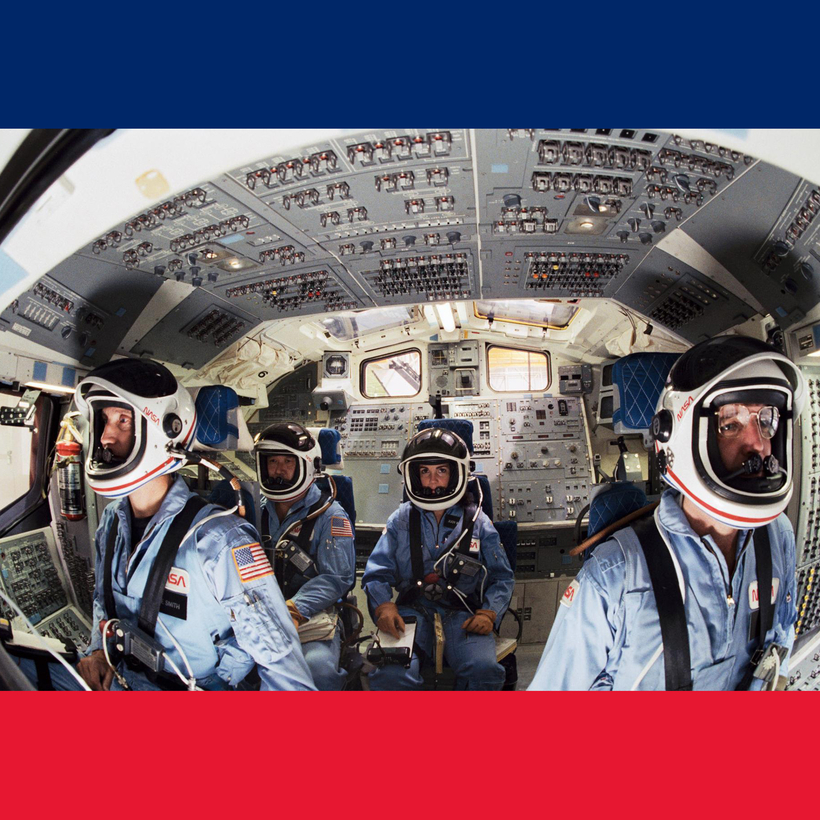The space shuttle Challenger exploded over Cape Canaveral on January 28, 1986. All seven crew members—including Christa McAuliffe, America’s “Teacher in Space”—were killed instantly.
At least that’s what most of us remember.
In fact, the explosion destroyed Challenger’s giant fuel tank, but not the part that held the crew. Torn from the rest of the shuttle, the crew compartment kept rising on sheer momentum for another 25 seconds before it began falling back to Earth, a 12-mile plummet that took almost two and a half minutes.
During that time, McAuliffe and the other astronauts were still alive. They died when they crashed into the Atlantic at more than 200 miles per hour.
What happened in the two minutes and 45 seconds between the televised explosion and the deadly splashdown? Were the astronauts conscious? Did they try to save themselves? I wanted to answer those questions in The Burning Blue, my new book on the Challenger disaster.
Long Road to the Atlantic
I started by sifting through file folders at NASA’s archives in Washington, D.C. I visited crew members’ families, asking difficult questions about their loved ones’ last moments. Then came the pandemic. To understand what happened onboard, I needed to know how the crew experienced those two minutes and 45 seconds, but in-person research was now out of the question.
Lucky for me, the National Museum of the U.S. Air Force, near Dayton, Ohio, had digitized a panoramic view of the simulator the crew had trained on, a near-perfect replica of the shuttle’s interior. Now I could study any of the 1,300 switches and dials Challenger commander Dick Scobee and pilot Mike Smith, his second-in-command, had to deal with.
I began learning what the pros call “switchology.” And when you mention that term to shuttle-era astronauts, they say you should talk to Jim Wetherbee.
Wetherbee, 68, is the only American to command five space missions. NASA veterans call him the guru of switchology. “If I were in Scobee’s seat,” he tells me, “I’d reach up to panel F4,” a set of buttons on the commander’s side of the shuttle’s flight deck.
To understand what happened onboard, I needed to know how the crew experienced those two minutes and 45 seconds.
But that wouldn’t have worked. Those buttons went dead in the moments after the initial explosion. The flight deck had gone dark.
“The cockpit was dead,” Wetherbee says. “The vehicle’s dying. At some point I would have said, ‘We’re screwed,’ and tried to make peace with my maker.”
But there is clear evidence that the astronauts tried to stay alive. The commander and pilot had PEAPs—“personal egress air packs” holding oxygen—mounted behind their seats, but they couldn’t reach them. Only the astronauts seated behind them, Judith Resnik and Ellison Onizuka, could reach the PEAPs that might save Scobee and Smith.
One of them did. NASA forensics would show that Smith’s PEAP was activated after the explosion—a two-step process that could not happen by accident. During Challenger’s last terrifying minutes, mission specialist Onizuka reached forward to pull a lever on Smith’s PEAP, then turned it 180 degrees, giving Smith the air he needed while he threw flight-deck switches in an effort to save them all.
Kevin Cook’s The Burning Blue: The Untold Story of Christa McAuliffe and NASA’s Challenger Disaster is out now from Henry Holt

